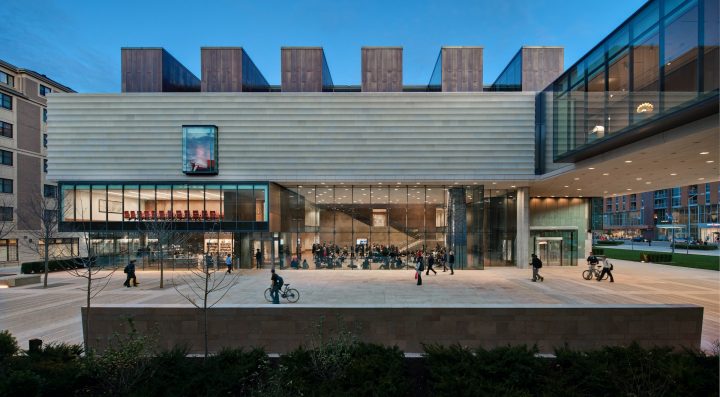
I recall interviewing as a candidate for director positions, and “What is your vision?” was the most common question. The question requires candidates to take their limited knowledge of an institution and spin an ambitious fantasy out of the barest of understanding, as if a “vision” could suddenly emerge like Athena, fully formed from the head of Zeus.
I have found that the job of museum director is less about fantastical visions and more about defining practical objectives and choices for the entire institution and its constituents. The objectives are place-specific, and cannot be known in advance. As directors we must keep envisioning at the 1000-foot view, but unless we can ground that view in pragmatic examples that help our teams link aspiration to action, the 1000-foot view remains an elusive and frustrating dream. Being a director requires understanding process and articulating how to manage change, evaluate the institution, and develop staff and community partners thoughtfully. These steps, over time, will realize goals even more exceptional than one could have predicted.
Listen beautiful relax classics on our Youtube channel.
While recognizing that every museum has its own unique challenges, audiences, and possibilities, I’d like to share three of the ways the Chazen is starting to interrogate and experiment with our approach to realizing the museum’s mission.
Imagine for a moment everyone in the organization prioritizing one or two goals each year concerning diversity, equity, inclusion, and accessibility. How far can an organization shift if everyone on the team becomes responsible for actionable items in their own area? Small steps, accumulated, make a huge difference. We have implemented this process at the Chazen for the first time this year. Already, it is changing the way some staff view their portfolio of work and how it’s critically linked to our strategic goals.
Providing multiple access points to the Chazen’s wide-ranging collection is central to our mission to serve campus and community audiences. Among our diverse holdings is a pedestal-sized, marble version of “The Emancipation Group” (1873), by Thomas Ball. A collaborative project created with artist Sanford Biggers and the MASK Consortium, entitled “RE:mancipation,” will study this sculpture and its complex history while cultivating a more nuanced understanding of our nation and ourselves. This important work cannot be solely institutionally driven, it must be conducted in partnership with artists, and the results of such projects should influence how we approach all collection display and interpretation.

In September 2019, the Chazen embarked on a radical expansion of public hours, opening to the public 12 hours a day, seven days a week. Pre-COVID-19 we learned a tremendous amount about how people choose to engage with the museum if given a broader range of choices. This move was part of a focus on our core mission of expanding access to students, staff, faculty, and community members. We will apply what we learned to drive decisions about our opening hours post-pandemic. In my first interview presentation I would never have chosen this concept as my “vision” — but conceiving, implementing, and evaluating our open hours has changed the organization in fundamental ways.
These kinds of repositioning insights do not support the cult of the visionary museum director. That era should be over. The director’s job is to set clear priorities for staff, to mentor, coach, and be clear-sighted about what is next; to leverage the expertise of the board; to make hard choices when needed; to be transparent, even when transparency feels impossibly hard; to take a deep breath and trust this new way of working. We directors must leave the institution, and the field, better than we found it.
COVID has forced museums to make tough choices, but it has also provided an important, and unforeseen opportunity to make some conscious decisions about how we want to move forward. There has been significant examination of how museums shut down, but we must now turn our energy to how we want to operate coming out of this crisis. It is critical to plan for it now, or we will simply restart old habits without thought. Old habits may be precisely what we need, but let’s choose them, rather than simply following unconsciously.
If you assert that the staff are one of the greatest institutional assets, but you don’t take equity seriously or support diversity as foundational to institutional success, you will never change your priorities or expectations around hiring, job performance, and team building. How many of us espouse the mantra of the outstanding staff, but refuse to devote significant funds in annual budgets to thoughtful, professional development at all levels?
If you claim excellence is foundational to your mission, but your definition of excellence is still mired in a 19th-century colonial construct, you will never achieve more than cursory changes to the collection or the way you activate objects for visitors.
We should not aim to revert to where we were in March 2020. This is the time we can truly change our institutional cultures. Most institutional change tends to be incremental and accumulative, but COVID has provided an unanticipated opportunity. We must ask, “How do we want to begin again?” And we must have the courage to leave behind old habits that were comfortable for many, but unwelcoming and antagonistic for many others. We must commit to a mindset holding diversity as the cornerstone of excellence.
I am just at the beginning of my own work transforming what I believe a museum director is supposed to be. The Chazen is not an example of “getting it right.” Right is not a destination. I stumble daily. We must learn from the stumbles. We must make concrete steps towards transforming our own museums and our field, so that aspirational statements about one’s “vision” are backed up by documentable action at all levels of our organizations. Let’s get to work.
Source: Hyperallergic.com